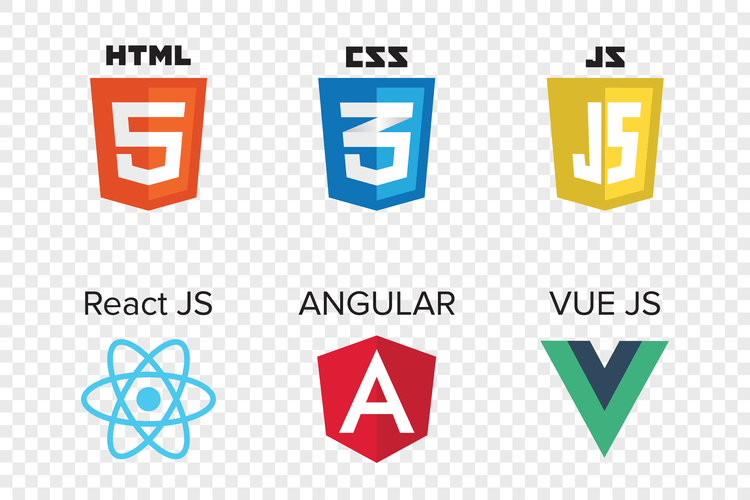Therefore, improving safety performance of larger RPAS temporarily may receive lower priority among these stakeholders. As a form of automation, the concept has been around for a long time in the form of screen scraping, which can be traced back to early forms of malware[ambiguous]. However, RPA is much more extensible, consisting of API integration into other enterprise applications, connectors into ITSM systems, terminal services and even some types of AI (e.g. Machine Learning) services such as image recognition.
- This study identified more than one hundred individual recommendations throughout the entire scope of RPAS.
- This would seem to make an ideal starting point for organizations beginning to adopt robotic automation for the back office.
- Air Force’s RPA training platform, which provides future RPA pilots and sensor operators with the skills they need to operate RPA effectively.
- To determine the most critical effects on RPAS operations, the respective ratings of the threat and vulnerability summary are correlated.
- Pilots of manned aircraft therefore are very unlikely to experience an airborne encounter (near-collision or collision) with an RPA either in segregated airspace during normal flight or during a typical RPA loss-of-control situation.
The typical benefits of robotic automation include reduced cost; increased speed, accuracy, and consistency; improved quality and scalability of production. Automation can also provide extra security, especially for sensitive data and financial services. To conduct advanced operations, you must pass the Small Advanced Exam and an in-person flight review. Now that you know the difference between RPA, RPAS, UAV and UAS, you can specialize in each of the branches of training that we have for you in UMILES with our drone courses.
Operational Risks to Manned Aviation
Over time, SKYbrary anticipates adding articles to the RPAS Category, reporting on regulatory and guidance philosophies implemented by NAAs in several states and regions. At present, such viewpoints are briefly described in UAS Rules and Guidance – EU and UAS Rules and Guidance – USA. Research scientists have performed a comparison of RPAS-related philosophies and regulations across 56 nations. Their stated purpose was to inform subject matter experts’ perspectives of the global state of RPAS risk management and to benefit NAAs and other stakeholders.

There are several actions that could trigger this block including submitting a certain word or phrase, a SQL command or malformed data. Back office clerical processes outsourced by large organisations – particularly those sent offshore – tend to be simple and transactional in nature, requiring little (if any) analysis or subjective judgement. This would seem to make an ideal starting point rpa use cases in accounting for organizations beginning to adopt robotic automation for the back office. Whether client organisations choose to take outsourced processes back “in house” from their Business Process Outsourcing (BPO) providers, thus representing a threat to the future of the BPO business,[21] or whether the BPOs implement such automations on their clients’ behalf may well depend on a number of factors.
Section 1: air law, air traffic rules and procedures
Air traffic control (ATC) accepts from remote pilots/RPAS operators requests for authorization to fly in controlled airspace near airports. The geographically agnostic nature of software means that new business opportunities may arise for those organisations that have a political or regulatory impediment to offshoring or outsourcing. A robotised automation can be hosted in a data centre in any jurisdiction and this has two major consequences for BPO providers. Firstly, for example, a sovereign government may not be willing or legally able to outsource the processing of tax affairs and security administration. On this basis, if robots are compared to a human workforce, this creates a genuinely new opportunity for a “third sourcing” option, after the choices of onshore vs. offshore.
This transmission of data is processed by GCS computers and showcased on GCS monitors to create a common tactical picture and vivid situational awareness for the RPA’s pilot and sensor operator, other intelligence personnel, ground troops, and commanding officers, regardless of their physical location. RPA flight and activities, mission objectives, and troop tasks are then adjusted based on the acquired data. The military’s ground control stations are usually produced by major defense contractors, with General Atomics Aeronautical Systems (GA-ASI) being the one of the most well-known producers. The stations are then equipped with commercial-off-the-shelf (COTS) or custom technologies purchased from trusted computer hardware and software companies, or subcontractors, before being sold to the military for implementation. In addition to the aircraft itself, all RPAS consist of several common components, which are the payload, human element, control element, data links and support element.
What are some examples of ground control stations?
All content on this website, including dictionary, thesaurus, literature, geography, and other reference data is for informational purposes only. This information should not be considered complete, up to date, and is not intended to be used in place of a visit, consultation, or advice of a legal, medical, or any other professional. Remember that the main difference between RPA and RPAS is that the first term refers to a vehicle and the second to the complete system that allows to operate such vehicle.

This study could not identify protective measures currently in place for off-duty and/or non-deployed personnel, but countless references were found revealing the names and identities of RPAS personnel during interviews and other press-related activities, indicating there is ample information to support such attacks. Until recent years, the general public — including many pilots of manned aircraft and air traffic controllers — tended to regard all operators and pilots of small RPAs as potential threats. As to key RPAS operational safety issues for operators and pilots, the FAA and https://www.globalcloudteam.com/ EASA have made similar inroads working with their small-RPAS communities to instill a strong RPAS safety culture and pilot professionalism. They also encourage airline pilots and air traffic controllers to respect and to regard every RPAS pilot-in-command as a fellow professional who influences the overall safety of the national airspace system. To enable routinely flying missions mentioned in the preceding section, regulatory authorities had to mitigate risks of collision with other aircraft (manned and unmanned) and mitigate the risks of a small RA striking people on the ground.
Trenton Systems Blog
And if you are not yet registered in our courses, you can start by learning the differences between drone pilot and drone operator, which are other terms that are commonly confused among beginners in this exciting world of drone flight. These differences are noticeable, as some of these terms are used to refer to aircraft as such; but others refer to complete systems that are put in place to fly a drone. However, it is important to make a distinction between each of them to avoid making incorrect references when talking about the different variations and systems that are used to control this type of aircraft, which are popularly known as drones. You probably already know what a drone is and what it is used for, but… have you heard about other terms used to refer to these and other aircraft?

A symmetric threat is commonly defined as an attack on a comparable military level (i.e. force on force) which abides by the Laws of Armed Conflict (LoAC). JARUS since 2007 has pursued “a single set of technical, safety and operational requirements for the certification and safe integration of UAS into airspace and at aerodromes” — with cross-border harmonisation and minimal duplication of NAA effort. Currently, 35 states, including several non-European states such as China, the Russian Federation and the United States, are involved in JARUS initiatives.
Combat Air
The small RPAS pilot operating within visual line of sight must be able to define aerodrome, airport, and pilot-in-command. This document is provided to guide trainers and pilots in the training required, and the examinations subjects to be covered when operating sRPAS VLOS under the new CAR Part IX. Trenton Systems is already supporting the RPA industry with made-in-USA rugged computing solutions. Carrier RPAS – designed to carry an immense stock of long-range, precision-guided air-to-air and air-toground munitions, designated to project military power like naval aircraft carriers. Currently, when browsing the Internet looking for related articles, UAV is the most frequent term. This designation is used to define the flying object employed for recreational and professional civilian applications.
This can lower the barrier to the use of automation in products that might not otherwise feature APIs for this purpose. Online exam questions are based on the Knowledge Requirements for Pilots of Remotely Piloted Aircraft Systems. All pilots of drones or “Remotely Piloted Aircraft Systems (RPAS)” with a maximum takeoff weight of 250 g up to and including 25 kg must pass an online exam. We must also make a distinction between the terms RPAS and RPAs in drones, that even when they seem very similar, they do not refer to precisely the same thing. As we have previously pointed out, RPAS (with a capital ‘S’), refers to the system formed by the different elements that interfere in the flight of an RPA.
Know what is RPAS? Got another good explanation for RPAS? Don’t keep it to yourself!
This variety provides an adversary with a broad spectrum of possible entry points into the RPAS network. Although current protective measures are thought to ensure an adequate level of cyber-security, they cannot guarantee absolute security. Current concepts of operation presume that to operate in non-segregated airspace, small RPAS will operate at least at an equivalent level of risk to that which manned aircraft experience.